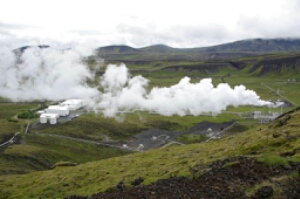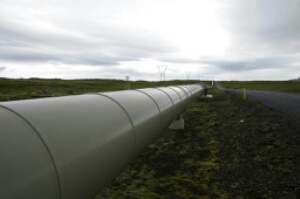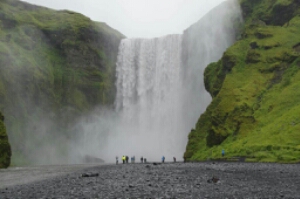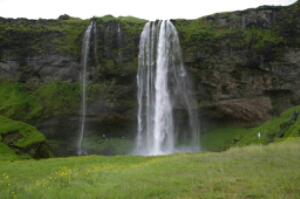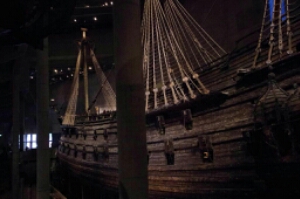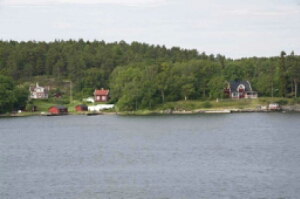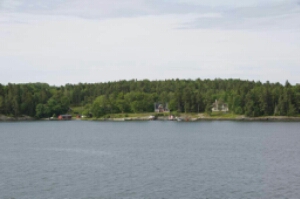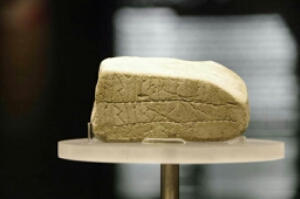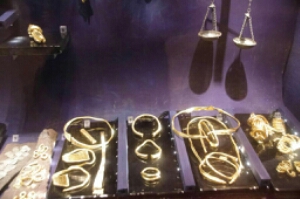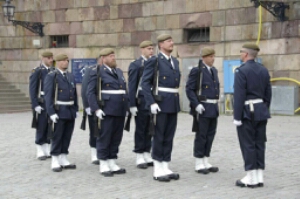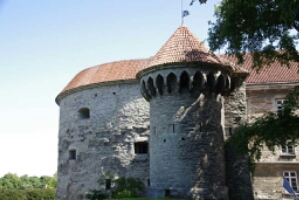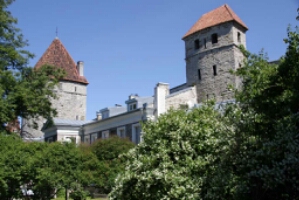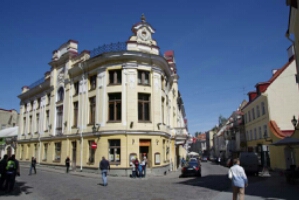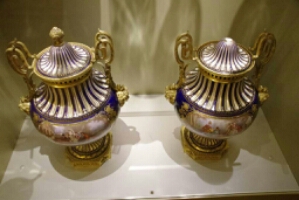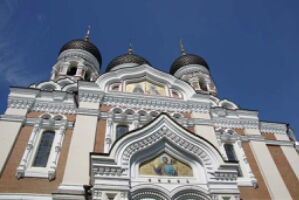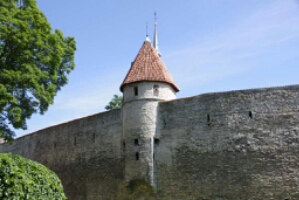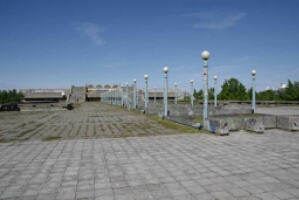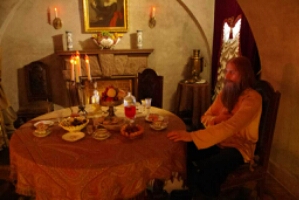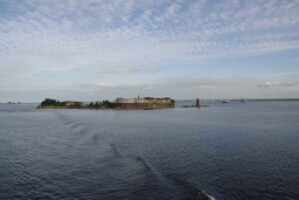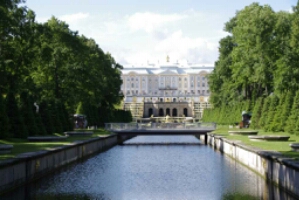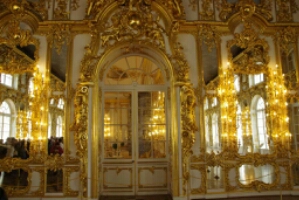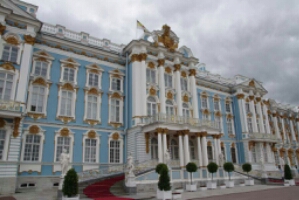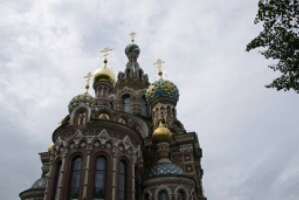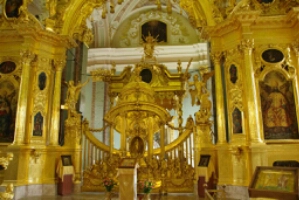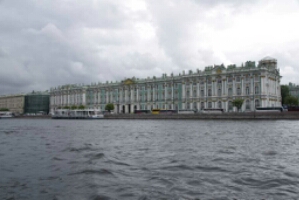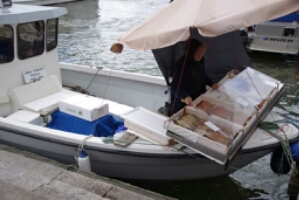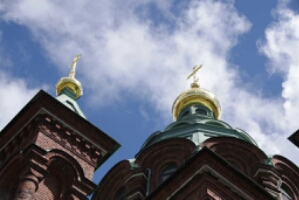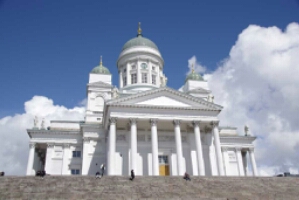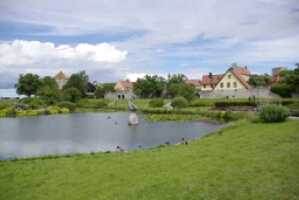
The walled city of Visby
We had a big problem with time adjustment today. Both Enid and I thought we needed to set our clocks ahead an hour — that was how we both read the ship information. We wanted to make sure we were up early so that we could get one of the first tenders off the ship into town, and wouldn’t have to wait for a boat. They indicated in the entertainment we went to last night that the tenders would start leaving about 7:30. So we thought if we got up at 6:30 we would easily eat breakfast and make the first transfer. We both missed the announcement that we should set our watches back an hour overnight.
So we awoke at 6:30, and it seemed like the ship was still quite far out to sea. I showered, then Enid, and we went for breakfast. Everything was closed. We looked at the ship’s clocks and they were an hour different from our watches — they said it was 6:10 am. So we went back to our cabin and tried to go back to sleep. We got up just before what we thought was 7 am, and went back up to the cafeteria. It was still closed. So we waited for another half hour, then went back up, waited for about ten minutes and were the first people into the cafeteria. After breakfast, we thought it was now 7:15 I went down to the lounge to get a tender ticket which they’d said would be available by this time, but there was no one there. We waited until just before 8 am (our watch time) and I went back to the lounge and a woman there said they’d decided not to give out tender tickets unless it got too congested, so I should just go to the gangplank. So that is what Enid and I did.
However, as we walked down the hallway we noticed that the clock said 6:55 am. Sometime in the past hour the clock had been turned back two hours. We were not at all certain what time it really was now, but we got on the very first tender, and sat behind two other Canadians. They said it was seven o’clock, and it turned out that they had done almost exactly the same as us, gone for early breakfast, only to find that the cafeteria was closed. The crew didn’t even wait for the tender to be filled, so we were very early into Visby this morning, before 7:30.
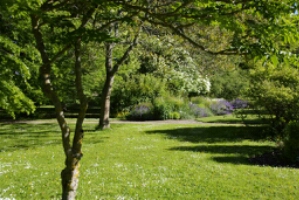
Visby botanical gardens
We first walked along the old city wall beside the ocean, until we came to the botanical garden. We spent the first part of the morning here, enjoying the very lovely flowers. They had many short stemmed roses with huge blooms, as well as many other kinds of flowering plants. It was beautiful sunny day to enjoy the flowers, one of the nicest days we’ve had so far.
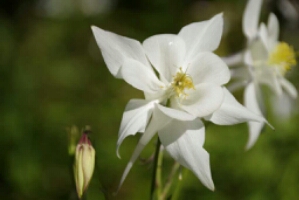
Visby botanical gardens

Walls and tower gate of Visby
After the garden we walked about half way around the walled city. The wall started in the 1300’s and over the next centuries was added on to several times, and made higher. Much of the wall is still intact, with numerous guard towers along it, and old city gates. You can walk up into some of the towers and get an idea of the view from the wall down into the moat outside.
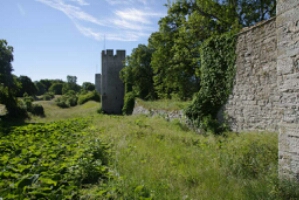
The walls of Visby
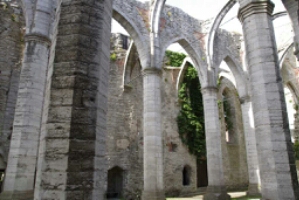
Ruins of St Karins Kirka
There were at one time 16 churches inside the walls of Visby, but only one is still intact. The stone walls, some in better repair than others, are all that remains of the others. We went into the one operational church, St,. Mary’s Cathedral, which dates from the 12th century. They are in the middle of a major restoration project, so the outside of much of the church is covered in scaffolding, and the interior was blocked off by a wire fence. However you could go into the church and photograph it, even though it was Sunday morning, as we were there so early that the service wouldn’t start for almost another hour.
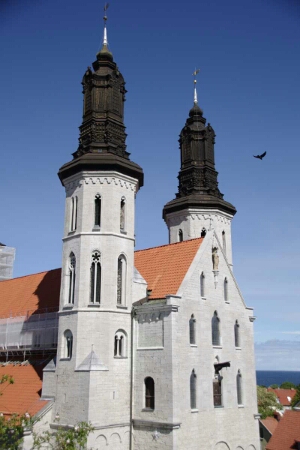
St. Marys Cathedral
We walked around though the narrow cobblestone streets, looking for the Gotland Museum. We had a very hard time following the map we had, as there are many, many intersecting streets, and our map only named a few. Finally we felt certain that we had gone too far, and identified a named crossing so could locate ourselves. We had to walk backwards about a kilometer, and even then we couldn’t find the museum, as it wasn’t in the location marked on our map. Finally we found the tourist information office — and at the same time spotted the museum.
We thoroughly enjoyed the museum. It was very modern, with most of the displays in Swedish and English. The lowest level has displays of large pictograph stones known as the “Picture Stones of Gotsland”. Dating from the 5th to 12th centuries, these stones are unique to this area. Their exact purpose is not known, though some of them may have been grave markers, or simply carvings to record important historical events. Many of them were carved into the shape of an axe head, and stood ten feet or so tall.
Another fascinating display was in the area called “The Treasury” which displayed kilograms of silver jewellery and gold and silver coins from about the 1300’s. These were probably buried by the local wealthy people of Gotsland when it was invaded by Denmark at this time. Then the location of the hoards was lost, and some of them were accidentally discovered just recently. What was perhaps most interesting about these coins was their origin. Many of them came from the middle east and Arabian countries — Egypt, Iraq, Iran, Uzbekistan, Afghanistan, and many others — and showed the amazingly huge trading empire that was maintained by the ancient northern peoples. There were hundreds of bracelets of solid silver, gold spoons, and other artifacts of gold, silver and bronze.
By now we were tired after a long day of walking, so were happy to wait in line for our tender back to the ship. Fortunately we didn’t have to wait too long and we were back on board by about 2:30, an hour before the final deadline.



